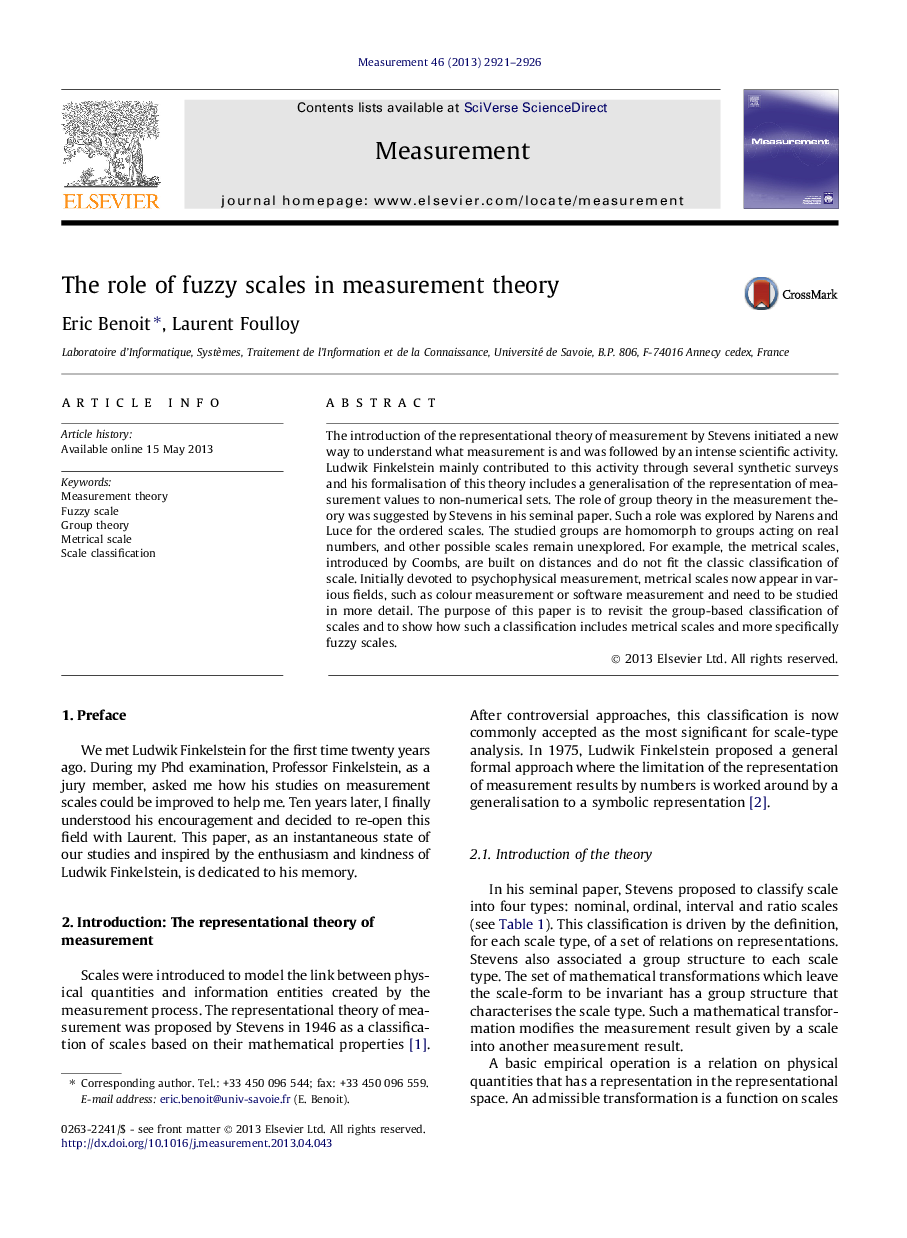| Article ID | Journal | Published Year | Pages | File Type |
|---|---|---|---|---|
| 10407620 | Measurement | 2013 | 6 Pages |
Abstract
The introduction of the representational theory of measurement by Stevens initiated a new way to understand what measurement is and was followed by an intense scientific activity. Ludwik Finkelstein mainly contributed to this activity through several synthetic surveys and his formalisation of this theory includes a generalisation of the representation of measurement values to non-numerical sets. The role of group theory in the measurement theory was suggested by Stevens in his seminal paper. Such a role was explored by Narens and Luce for the ordered scales. The studied groups are homomorph to groups acting on real numbers, and other possible scales remain unexplored. For example, the metrical scales, introduced by Coombs, are built on distances and do not fit the classic classification of scale. Initially devoted to psychophysical measurement, metrical scales now appear in various fields, such as colour measurement or software measurement and need to be studied in more detail. The purpose of this paper is to revisit the group-based classification of scales and to show how such a classification includes metrical scales and more specifically fuzzy scales.
Keywords
Related Topics
Physical Sciences and Engineering
Engineering
Control and Systems Engineering
Authors
Eric Benoit, Laurent Foulloy,
